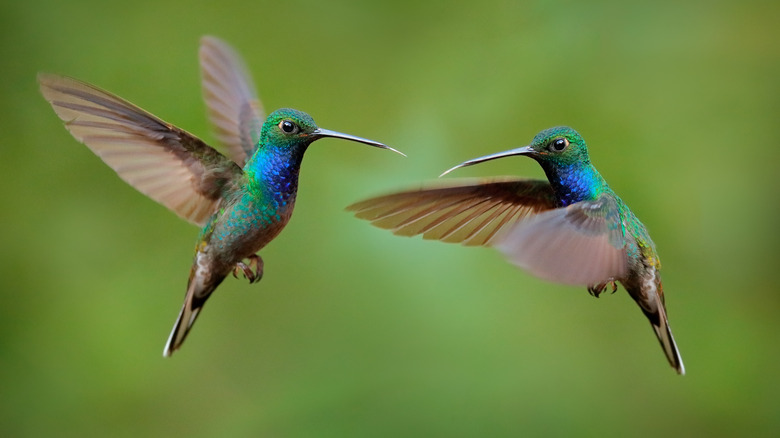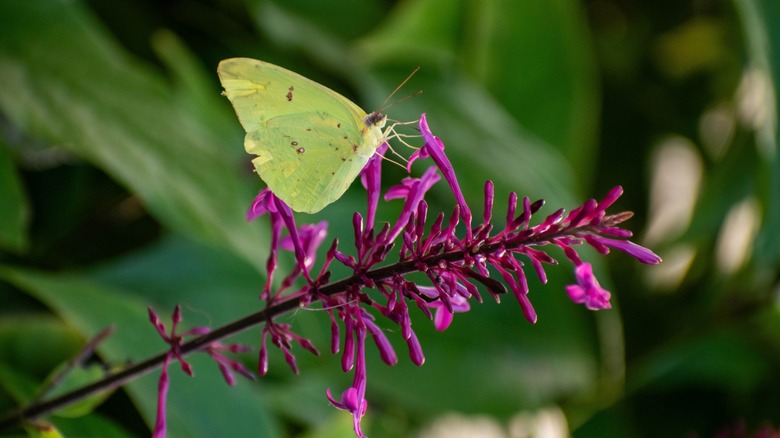The Purple Flowering Shrub Hummingbirds, Butterflies & Bees Can't Get Enough Of
Pollinators like hummingbirds, butterflies, and bees are super important to the ecosystem. Without these hardworking creatures, the flowering crops we use for food and medicine wouldn't be as readily available. Adding plants to your outdoor space that pollinators love is one way you can help their population and your local ecosystem. A flower that will add a pop of color to your yard and bring more pollinators into your garden is the purple firespike.
Hummingbirds, butterflies, and bees love purple firespike, known scientifically as Odontonema callistachyum. The birds and insects gravitate towards the evergreen shrub's tubular blossoms filled with nectar. Apart from sweet sap, firespike's broad leaves can provide shelter and collect water for them to sip. As long as it's not too cold, this plant can lure in pollinators from spring to winter, as the flowers bloom year-round. Plus, this vibrant crop is easy to care for, so you don't need green thumbs for the purple flowers to flourish.
Ways to add purple firespike to your yard
There are several ways you can incorporate purple firespike into your outdoor space to attract hummingbirds, butterflies, and bees. Since this flowering shrub can reach up to 10 feet tall, it is ideal for hedges or plant privacy screens. You can plant a border to edge your lawn or conceal areas of your backyard, all while luring in these winged creatures. Purple firespike can also be a great plant to start a pollinator garden. It is best to grow non-hybrid varieties and, if possible, native to your area.
Purple firespikes grow fast and are low maintenance. This evergreen shrub needs full to partial sun and regular watering for optimal blooms. The vibrant flowers grow best in zones 8 to 11. However, you can plant them in containers that decorate your outdoor space during the warmer weather and bring the firespike inside during the wintertime. That way, you can enjoy the purple flowers all year and the lovely pollinators it invites.


